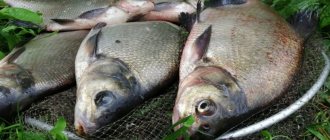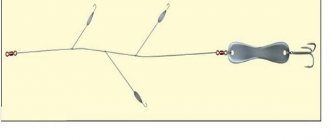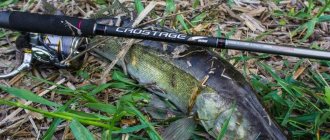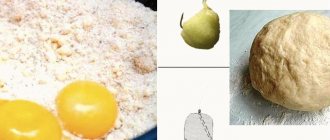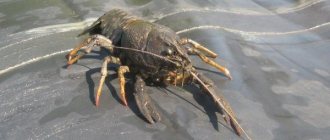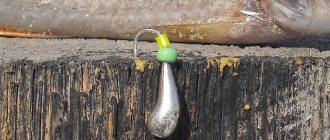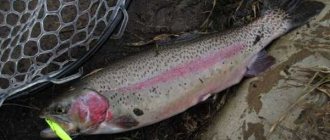Place in classification
Cicadas have long wings and good flight ability. Because of this, they are often mistaken for flies. But cicadas are not related to the order Diptera. Or an outdated classification is used.
On a note!
Cycads are representatives of the order Hemiptera, which includes bugs. In terms of their feeding method, cicadas are also closer to tree bugs than to flies. All cicadas are sap-sucking insects.
Life cycle
Life of larvae
The lifespan of larvae is from 13 to 17 years. Male adults live for 2 to 3 weeks, and female adults live for 2 to 3 months.
Masonry
Females lay eggs in the autumn. This occurs in the soft tissue of stems, leaves and root parts of winter cereals, carrion. One clutch contains from 400 to 600 eggs.
Hatching
A month later, the larvae begin to hatch. There is no pupal stage. The hatched nymph falls to the ground and buries itself. Lives at a depth of about 2 m. The nymphs have a pair of front legs that tear apart and dig out chambers closer to the roots, which they consume.
Exit to the surface
In humid environments, a large individual builds a clay tower on the surface of the ground for ventilation. The nymphs are busy building an exit tunnel.
It is hypothesized that the long life cycle evolved during the Ice Age to cope with extreme cold.
Appearance
Insects of medium and large sizes. Body length is from 2 to 5.5 cm. The wingspan of the largest varieties is up to 12 cm.
The head is short and wide. In many species it appears flattened in front. The eyes are widely spaced and bulging. On the crown there are 3 simple eyes forming a triangle. The antennae are short and consist of 7 segments. The mouthparts are piercing-sucking type. With their proboscis, cicadas pierce leaves and young shoots of plants to drink juice.
The photo of the cicada “fly” clearly shows why these insects are considered dipterous. The wings of most cicadas are transparent, but the front ones are much longer than the back ones. In a quiet position, the first pair completely covers the back one. The manner of folding their wings is different from that of flies. The wings of cicadas in a calm position are folded into a “house”; in flies, the plates are parallel to each other and are in a horizontal plane.
Interesting!
Some species have brightly colored or black wings.
Cicada fly
But the paws immediately reveal the difference between a cicada and a fly. The imago does not dig in the ground, but even its front legs are quite powerful. The femurs on the first pair are thickened, armed with spines below. Tibia are cylindrical. The middle pair of legs has wide and short hips. And only the third rear pair looks like the legs of a fly.
General characteristics of cicadas
Cicadas are representatives of a class of insects that have a number of significant differences. Some compare them to a butterfly, others even to a tadpole. If this insect spreads its wings, it really looks like a butterfly. But only at first glance. Firstly, when at rest, the cicada’s wings fold completely differently. And secondly, there are no such powerful butterflies.
They are called tadpoles figuratively. They have a very large head, or rather, the front part of the body. And if we continue to form images, then cicadas are, rather, bulls with transparent wings. They live where the summers are warm and long, and the winters are short or non-existent. These are inhabitants of tropical and subtropical zones.
These insects drink plant sap. Adult winged individuals suck liquid from the ground part, and the larvae live in the soil, extracting juice from the roots.
The wingless larva of the insect is somewhat reminiscent of the mole cricket, known to all gardeners. The similarity is due to the powerful front part of the body and large paws, which, like those of the mole cricket, serve to break passages in the ground, moving from root to root.
Cicadas live for a very long time. True, this applies to their entire life path - from egg to adult sexually mature individual. It is not surprising that in the times of pagan images and symbols this insect personified immortality.
Cicadas are members of the class of insects
The size of these insects inspires respect. Even the smallest of them have a body length of 2 to 5 cm. But the largest cicadas live in Indonesia. This is the so-called royal cicada. It grows up to 6 cm in length, and its wingspan reaches 18 cm.
Reproduction
Males attract females by singing. And the further south the species lives, the louder the male sings. It has even been suggested that the insects use this to scare away predators. The massive chattering of males in the jungle deafens even a person. Predators with their keen hearing have it even worse.
After meeting the male, the fertilized female goes to lay eggs, and the male dies. The female will live a little longer: until she lays several hundred eggs. These insects lay eggs in cuts on the bark of young shoots and leaf axils. The female cuts the bark with her powerful forepaws. Trees usually tolerate bark cuts well, but the leaves die. If there are a lot of cicadas, they can kill the foliage on the trees.
After completion of the clutch, the female dies. The larvae emerge from the eggs after 1.5-2.5 months and fall to the ground. The remaining stages of development, until reaching the surface, the larva will spend underground, feeding on plant roots.
Interesting!
Some larvae can burrow to a depth of 1 m.
Another difference from flies is the absence of a pupal stage. The nymph that appears on the surface climbs onto a vertical surface to a height of about a meter and freezes. After a short time, the outer cover of the nymph bursts and an adult is born.
General information and characteristics
Cicadas are quite large individuals: the most impressive varieties reach a wingspan of 18 cm. Their interesting feature is the presence of three ocelli in the form of a triangle on the head, which are located between two complex compound eyes.
The wings of insects are transparent, have noticeable strength and are penetrated by many veins. The shade of the wing may vary depending on the variety and habitat.
In the middle zone, where cicadas live in Russia, individuals are represented by the mountain variety. However, almost all song species are similar to each other and have practically no significant differences, with the exception of body length and its color.
Sharply different species are quite rare: for example, the Brazilian variety differs from the rest in that on its front wing there is a thick vein that separates the dense, leathery part from the membranous and transparent part.
Song cicadas have earned their beautiful name for their ability to fill the air with powerful melodic chirping sounds, and only males are endowed with this ability - thanks to a special apparatus located on the abdomen.
This ability was not given to them by chance: with its help they call on females. Adult winged males do not live very long, which cannot be said about the larval stage of the insect - in the nymphal phase they, depending on the species, can exist for several years.
Insects eat exclusively plant juices - they extract them using a special proboscis, which is equipped with their mouthparts. Thanks to it, pests absorb sap even from the deep layers of plants without much difficulty.
After mating, adult females begin to lay eggs using a special serrated ovipositor, which is used to incise and pierce plant surfaces. In the resulting voids they lay a clutch of several hundred eggs.
Subsequently, the hatched larvae, which still have little resemblance to the imago, go into the soil, into deep layers - sometimes the nymphs burrow to a depth of 1 meter. There they feed on the roots and underground part of plant trunks. Before turning into adults, individuals come to the surface and set up burrows for themselves, in which they patiently wait in the wings.
Area
Cycads live throughout the entire globe. 18 species live in Europe. On the territory of Russia there are two most common types: ordinary and mountain.
cicada fly
The latter is unfairly called a mountain. Its range occupies the whole of Eurasia, including the lowland part. In the north, the border reaches the south of Great Britain, Finland, Sweden, and the Leningrad region. In Siberia, the species is found in isolated pockets.
This species is capable of singing while sitting on grass and ground. And for habitat it prefers well-warmed areas with steppe vegetation and individual trees. The mountain cicada fly feels great in the Krasnodar region with its steppes and fertile soil.
The range of the common cicada occupies the more southern regions of the planet:
- Mediterranean;
- Transcaucasia;
- Crimea;
- Caucasus.
Sometimes the common cicada is called the Crimean fly. But unlike flies, the cicada in Crimea remained only in the mountainous part, almost becoming extinct in the foothills. In steppe regions it is replaced by a mountain species.
Types of cicadas
Only 2 species of the song cicada family live in Russia. Each has its own distinctive characteristics, although their lifestyle, diet and even habitats are largely similar.
Common cicada
This is usually the name given to the most widespread species of a taxon. That’s right - this species is a common inhabitant of the Mediterranean, Crimea, the Caucasus and Transcaucasia. Habitats: mountains, steppes and forest-steppes. This insect takes root well in gardens and vegetable gardens, but people do not want to put up with it, believing that cultivated plants suffer greatly from it. For this reason, the chirping of this insect is heard mainly away from agricultural land.
The common cicada is a fairly large insect. The length of its body is 30-36 mm, and if with wings, then all 40-50 mm. On the sides of the large head there are 2 large compound eyes. There are 3 small simple eyes in the center of the head.
Mountain cicada
This is the only representative of singing cicadas in central Russia. It is small in size, highly active and has a wide distribution area. The body length reaches 20 mm, with wings - 25 mm. The body is stocky, very dark, almost black, with a dim spotted pattern of ocher-orange color. The song instrument is located on the underside of the first abdominal segment in males.
Diet
Cicada on a burdock.
The cicada feeds on plant sap. This is possible thanks to the elongated proboscis. With its help, it makes a puncture in the bark of a tree and dense stems. Females do this by ovipositing.
They prefer air-hardened juice, grains, oilseeds, and melons. Cicadas are garden pests. Butterflies are capable of destroying berries and root plants. The roseate species feeds on lilac, apple tree, rose, rose hip, cherry, and pear.
